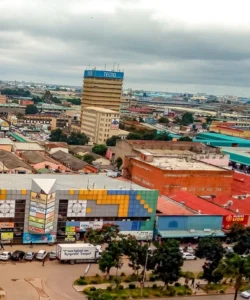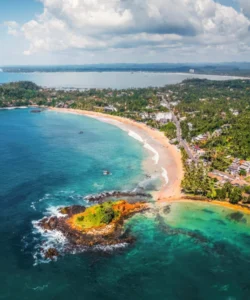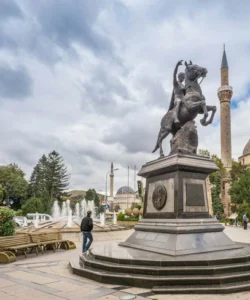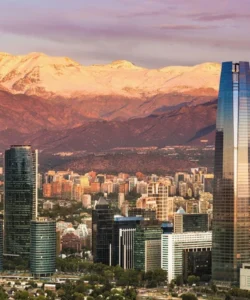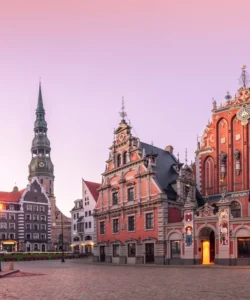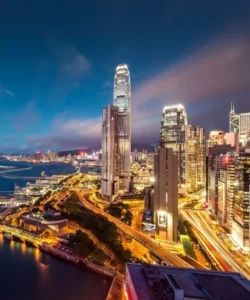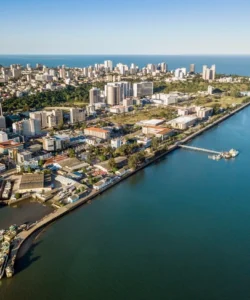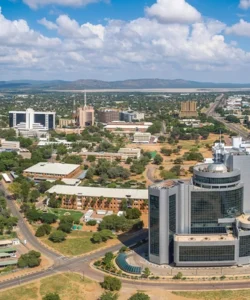Italy, officially the Italian Republic, is a country located in Southern Europe, bordering France, Switzerland, Austria, Slovenia, San Marino, and Vatican City. Known as the “Bel Paese” (Beautiful Country), it is a land of immense cultural heritage, breathtaking diverse landscapes, and one of the world’s most influential cuisines.
![]()
Area and Population:
Italy covers an area of approximately 301,340 km² (116,348 sq mi). As of early 2025, its population is estimated to be around 58.6 million.
Capital:
The capital city of Italy is Rome (Roma).
Major Cities:
Besides Rome, other major cities include Milan (Milano), Naples (Napoli), Turin (Torino), Palermo, Genoa (Genova), Bologna, Florence (Firenze), and Venice (Venezia).
Language:
The official language of Italy is Italian. Various regional dialects are also spoken, though standard Italian is understood nationwide. English is increasingly common in tourist areas.
Currency:
As a founding member of the European Union and the Eurozone, Italy uses the Euro (€) as its official currency.
Religion:
The dominant religion in Italy is Roman Catholicism, with the Vatican City (an independent state within Rome and the smallest sovereign state in the world) being the spiritual and administrative center of the Roman Catholic Church. The vast majority of the population identifies as Catholic. There are smaller communities of other Christian denominations, Muslims, and other religious groups.
Attractions and Wonders:
- Ancient & Historical Wonders:
- Colosseum, Rome: An iconic ancient Roman amphitheater, a symbol of Rome’s imperial power.
- Roman Forum and Palatine Hill, Rome: The heart of ancient Rome, with vast ruins of government buildings, temples, and homes.
- Vatican City: An independent city-state within Rome, home to St. Peter’s Basilica, the Vatican Museums (including the Sistine Chapel), and the Pope.
- Pantheon, Rome: A remarkably preserved ancient Roman temple, now a church.
- Pompeii and Herculaneum: Ancient Roman cities buried by the eruption of Mount Vesuvius in 79 AD, offering an extraordinary glimpse into Roman life.
- Leaning Tower of Pisa: The famous freestanding bell tower, renowned for its unintended tilt.
- Duomo (Florence Cathedral) and Brunelleschi’s Dome, Florence: A masterpiece of Renaissance architecture, dominating the Florentine skyline.
- St. Mark’s Basilica and Doge’s Palace, Venice: Iconic structures in St. Mark’s Square, showcasing Venetian power and artistry.
- Castel dell’Ovo, Naples: A picturesque seaside castle with ancient origins.
- Natural Beauty & Scenic Regions:
- Venice Canals: The unique city built on water, with gondolas, bridges, and stunning architecture.
- Florence and Tuscany: A region celebrated for its rolling hills, vineyards, historic hill towns, and Renaissance art.
- Cinque Terre: Five picturesque, colorful villages perched on cliffs along the Ligurian coast, a UNESCO World Heritage site.
- Amalfi Coast: A dramatic and beautiful coastline with pastel-colored villages clinging to cliffs overlooking the Mediterranean.
- Dolomites: A stunning mountain range in the northern Italian Alps, offering dramatic peaks, beautiful valleys, and excellent hiking/skiing.
- Lake Como and the Italian Lakes: Glamorous lakes surrounded by mountains, charming towns, and villas.
- Sardinia (Sardegna): An island known for its rugged landscapes, pristine beaches, and ancient megalithic ruins.
- Sicily (Sicilia): The largest Mediterranean island, rich in ancient history (Greek temples, Roman villas), volcanic landscapes (Mount Etna), and vibrant culture.
Architecture:
Italian architecture is incredibly diverse and historically significant, laying foundations for many Western architectural styles:
- Ancient Roman: Colossal structures like the Colosseum, Pantheon, aqueducts, and forums, characterized by engineering prowess, arches, domes, and concrete.
- Romanesque (11th-13th Century): Solid and monumental churches, often with round arches and thick walls (e.g., Pisa Cathedral, San Miniato al Monte in Florence).
- Gothic (13th-15th Century): Characterized by pointed arches, ribbed vaults, and large windows (e.g., Milan Cathedral, Florence Cathedral). Italian Gothic is often less ornate than its northern European counterparts.
- Renaissance (15th-16th Century): Born in Florence, a revival of classical principles emphasizing symmetry, proportion, and harmony (e.g., Brunelleschi’s Dome, St. Peter’s Basilica design by Bramante, Raphael, Michelangelo).
- Baroque (17th-18th Century): Dramatic, ornate, and theatrical, aiming to evoke emotion and awe (e.g., St. Peter’s Square by Bernini, Trevi Fountain).
- Neoclassical (18th-19th Century): A return to classical forms, emphasizing simplicity and grandeur (e.g., Vittorio Emanuele II Monument in Rome).
- Art Nouveau (Stile Liberty) / Art Deco (Early 20th Century): Found in cities like Milan and Turin, with elegant decorative elements.
- Rationalist and Fascist-Era Architecture: Seen in some public buildings from the early to mid-20th century, characterized by monumental and often stark designs.
- Contemporary: Modern architects continue to innovate, with new designs appearing in urban centers.
Roads:
Italy has an extensive and generally well-maintained road network, especially its motorways, which are crucial for connecting its diverse regions.
- Autostrade (Motorways – A-roads): A comprehensive network of multi-lane, high-speed highways (marked with green signs) that connect major cities and regions throughout the country. Most autostrade are toll roads (a pedaggio), and payment can be made via cash, credit card, or electronic tag (Telepass).
- Strade Statali (State Roads – SS-roads): A network of national roads (marked with blue signs) that are generally well-maintained and connect smaller towns and provide alternatives to tolls.
- Strade Provinciali (Provincial Roads – SP-roads): Local roads managed by provinces, varying in quality but offering access to rural areas and smaller villages.
- Mountain Roads: In regions like the Dolomites or Appenines, roads can be winding and challenging, requiring careful driving, especially in winter.
- ZTL (Zona a Traffico Limitato): Many historic city centers have restricted traffic zones (ZTLs) where only authorized vehicles are allowed. These are strictly enforced by cameras, and driving into them without permission can result in heavy fines. Pay close attention to signage.
Driving can be efficient for intercity travel, but navigating within historic city centers is often best done on foot or by public transport.
Hotels:
Italy offers an incredibly diverse array of accommodation options, catering to every budget and taste, from luxurious palazzi to charming agriturismi.
- Luxury and Grand Hotels: Found in major cities (Rome, Florence, Venice, Milan) and popular resort areas (Amalfi Coast, Italian Lakes), often in historic buildings with opulent decor and high-end services. International luxury chains are well-represented.
- Boutique Hotels: Numerous stylish and unique boutique hotels can be found in city centers, offering personalized experiences and often reflecting local charm.
- Agriturismo (Farm Stays): A popular and wonderful option, especially in Tuscany, Umbria, and other rural regions. These are working farms that offer accommodation, often with home-cooked meals featuring local produce.
- Historic Hotels and Palazzi: Opportunities to stay in converted noble palaces, particularly in Venice and Florence.
- Chain Hotels: Major international and Italian hotel chains are widely available.
- Bed & Breakfasts (B&Bs) and Guesthouses: Numerous smaller, often family-run establishments providing a more intimate and local experience.
- Apartments and Villas: Popular for self-catering, especially for longer stays or groups.
Restaurants and Cuisine:
Italian cuisine is world-renowned for its simplicity, quality ingredients, and regional diversity. Each region of Italy boasts its own unique specialties.
- Pasta: The cornerstone of Italian cuisine, with countless shapes and sauces.
- Carbonara (Rome): Eggs, Pecorino Romano cheese, guanciale (cured pork cheek), and black pepper.
- Cacio e Pepe (Rome): Cheese and pepper.
- Aglio e Olio: Garlic and oil.
- Bolognese (Bologna): A slow-cooked meat ragù, served with tagliatelle.
- Pesto (Liguria): A sauce of basil, pine nuts, garlic, Parmesan, Pecorino, and olive oil.
- Lasagne: Layered pasta with ragù, béchamel, and cheese.
- Pizza (Naples): The birthplace of pizza, especially Neapolitan pizza (Pizza Napoletana), characterized by its soft, chewy crust and simple, fresh toppings.
- Risotto (Northern Italy): Creamy rice dishes, often with saffron (Risotto alla Milanese), mushrooms, or seafood.
- Gelato: Italian ice cream, known for its intense flavors and creamy texture.
- Espresso and Coffee Culture: Coffee is deeply ingrained in Italian daily life, from morning espresso to cappuccino (only for breakfast).
- Antipasti: Appetizers like bruschetta, cured meats (prosciutto, salami), olives, and marinated vegetables.
- Parmigiano Reggiano: King of cheeses, from Emilia-Romagna.
- Balsamic Vinegar: From Modena and Reggio Emilia.
- Focaccia (Liguria): A flat oven-baked bread, similar to pizza dough.
- Ossobuco (Milan): Braised veal shanks with vegetables, white wine, and broth.
- Tiramisù: A classic dessert made with coffee-soaked ladyfingers, mascarpone cheese, eggs, and cocoa powder.
- Cannoli (Sicily): Fried pastry shells filled with a creamy ricotta cheese.
Drinks:
- Wine: Italy is one of the world’s largest and oldest wine producers, with countless indigenous grape varieties and renowned regions like Chianti (Tuscany), Barolo & Barbaresco (Piedmont), Prosecco (Veneto), and Nero d’Avola (Sicily).
- Aperitivo: A pre-dinner drink tradition, often accompanied by small snacks (e.g., Aperol Spritz, Negroni).
- Limoncello: A sweet lemon liqueur, especially from the Amalfi Coast.
- Grappa: A strong alcoholic beverage, a pomace brandy.
Dining in Italy is a central part of the cultural experience, ranging from humble trattorias and pizzerias to elegant fine dining establishments, many with Michelin stars. The focus is always on fresh, seasonal ingredients and regional authenticity.

